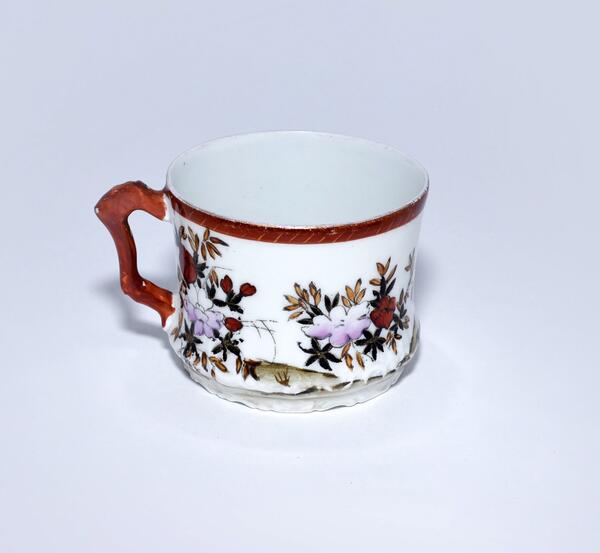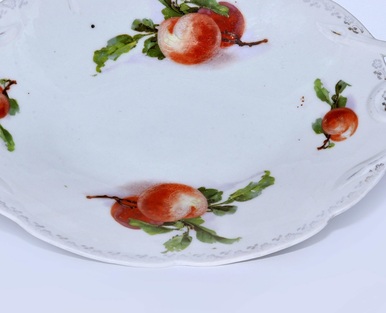In the Novgorod governorate, the production of tableware and construction materials was boosted by the entrepreneur Ivan Kuznetsov. He had five enterprises: three porcelain factories — Volkhovskaya, Bronnitskaya and Gruzinskaya — as well as a glass factory near the Chudovo station of the Nikolaev railway road and a brick factory in the village of Buidinskoye in the Novgorod district.
Before Kuznetsov opened his first factory, he worked for his cousin, Matvey Kuznetsov, in a company that produced porcelain and earthenware products. There, the future manufacturer learned how to prepare plaster molds, how kilns are arranged, and also invented and tested new compositions of ceramics and glazes for painting dishes.
In 1878, Ivan Kuznetsov opened the first porcelain factory in the Novgorod Governorate. In the first years of operation, the technical equipment of the production was mostly primitive: the factory employed 50 people who made clay pots manually on potter’s wheels, and there was only one kiln for firing.
Only almost 20 years since the opening, in 1897, the first steam engine from Germany was installed, followed by a steam boiler a year later, and in 1902 the first grinding machine was ordered from England. In 1912, the factory operated 13 furnaces and employed 1,680 workers.
In 1918, the factory was nationalized, and did not operate until 1921. In 1922, it was reopened and renamed the “Comintern”. The old forms and drawings developed by Ivan Kuznetsov were used in the work. The products were decorated with paintings, drawings and then painted by hand. In those years, the crockery with the “Chinese” theme became especially popular — milk jugs, matching cups and saucers, as well as saucers with a scalloped edge were decorated with this ornament. Also, the “Comintern” produced table porcelain — bowls and dishes decorated with “bouquets”, salad bowls with fruit and berry ornaments.
During the Great Patriotic War, the Chudovsky district was surrounded by the German fascists. The factory was destroyed. The remaining equipment was dismantled and sent to the neighboring factories “Krasny Farforist” and “Proletary”. Many artists and sculptors of the factory also went to work there.
Before Kuznetsov opened his first factory, he worked for his cousin, Matvey Kuznetsov, in a company that produced porcelain and earthenware products. There, the future manufacturer learned how to prepare plaster molds, how kilns are arranged, and also invented and tested new compositions of ceramics and glazes for painting dishes.
In 1878, Ivan Kuznetsov opened the first porcelain factory in the Novgorod Governorate. In the first years of operation, the technical equipment of the production was mostly primitive: the factory employed 50 people who made clay pots manually on potter’s wheels, and there was only one kiln for firing.
Only almost 20 years since the opening, in 1897, the first steam engine from Germany was installed, followed by a steam boiler a year later, and in 1902 the first grinding machine was ordered from England. In 1912, the factory operated 13 furnaces and employed 1,680 workers.
In 1918, the factory was nationalized, and did not operate until 1921. In 1922, it was reopened and renamed the “Comintern”. The old forms and drawings developed by Ivan Kuznetsov were used in the work. The products were decorated with paintings, drawings and then painted by hand. In those years, the crockery with the “Chinese” theme became especially popular — milk jugs, matching cups and saucers, as well as saucers with a scalloped edge were decorated with this ornament. Also, the “Comintern” produced table porcelain — bowls and dishes decorated with “bouquets”, salad bowls with fruit and berry ornaments.
During the Great Patriotic War, the Chudovsky district was surrounded by the German fascists. The factory was destroyed. The remaining equipment was dismantled and sent to the neighboring factories “Krasny Farforist” and “Proletary”. Many artists and sculptors of the factory also went to work there.


